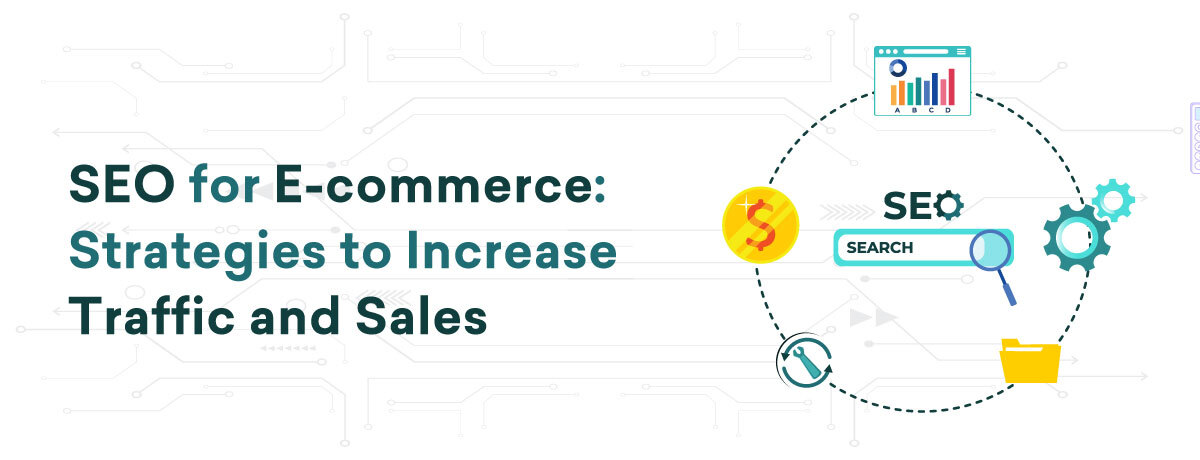In the competitive world of online retail, it can be challenging to distinguish oneself. However, effective Search Engine Optimization (SEO) can make a significant difference in driving traffic and boosting sales. This blog will explore key SEO strategies specifically tailored for e-commerce websites.
Table of Contents
1. Keyword Research: The Foundation of SEO
Effective SEO begins with thorough keyword research. For e-commerce, it’s essential to focus on:
Product-Specific Keywords: These are the terms potential customers use to search for products you offer. Tools like Google Keyword Planner, Ahrefs, and SEMrush can help identify high-volume, low-competition keywords.
Long-Tail Keywords: These are more specific phrases that often convert better than broad terms. For example, “best-running shoes for flat feet” is likely to attract more qualified traffic than just “running shoes.”
Action Step: Regularly update your keyword list based on trends and customer behavior. Use these keywords strategically in product descriptions, titles, meta descriptions, and throughout your site’s content.
2. Optimize Product Pages
Each product page should be optimized to attract search engines and convert visitors. Key elements include:
Unique Product Descriptions: Avoid duplicate content by writing unique descriptions for each product. Highlight benefits, features, and use cases.
High-Quality Images: Use high-resolution images with descriptive file names and alt text that includes relevant keywords.
Customer Reviews: Incorporate customer reviews as they provide fresh content and help with long-tail keyword rankings.
Action Step: Regularly review and update product pages to ensure they are optimized and reflect current best practices.
3. Create High-Quality Content
Content marketing is crucial for e-commerce SEO. By creating valuable content, you can attract and engage potential customers.
Blog Posts: Write informative articles related to your products. For instance, a clothing retailer might publish posts on fashion trends, style tips, or care guides.
Buying Guides: Help customers make informed decisions by providing detailed buying guides. These can address common questions and concerns.
Videos: Create product demos, how-to videos, and customer testimonials. Video content can significantly enhance user engagement and time spent on your site.
Action Step: Develop a content calendar to ensure consistent publishing of high-quality content.
4. Optimize for Mobile
With the majority of online shopping now happening on mobile devices, mobile optimization is essential.
Responsive Design: Ensure your website is fully responsive and provides a seamless experience on all devices.
Fast Load Times: Mobile users expect fast load times. Optimize images, leverage browser caching, and consider using a content delivery network (CDN) to speed up your site.
Action Step: Regularly test your website’s mobile performance and make necessary adjustments to improve user experience.
5. Technical SEO
Technical SEO involves optimizing the backend of your site to help search engines crawl and index it effectively.
Site Structure: A well-organized site structure makes it easier for search engines to index your content. Use a logical hierarchy of categories and subcategories.
XML Sitemaps: Submit an XML sitemap to Google and other search engines to help them discover your pages.
HTTPS: Ensure your website is secure by using HTTPS. This not only improves SEO but also builds trust with customers.
Action Step: Conduct regular technical audits to identify and fix any issues that might affect your site’s performance.
6. Leverage Social Proof
Social proof, such as customer reviews and testimonials, can boost your SEO efforts by driving organic traffic.
User-Generated Content: Encourage customers to share photos and videos of your products on social media.
Social Sharing: Make it easy for visitors to share your products and content on social media platforms.
Action Step: Actively engage with customers on social media and feature user-generated content on your website.
7. Link Building
Building high-quality backlinks can significantly enhance your site’s authority and ranking.
Guest Blogging: Write guest posts for reputable sites in your industry.
Influencer Partnerships: Collaborate with influencers to reach a broader audience and gain valuable backlinks.
Broken Link Building: Find broken links on other websites and offer your content as a replacement.
Action Step: Develop a link-building strategy and consistently work on acquiring high-quality backlinks.
Conclusion
Implementing these SEO strategies can help e-commerce websites increase traffic and boost sales. By focusing on keyword research, optimizing product pages, creating valuable content, ensuring mobile optimization, addressing technical SEO, leveraging social proof, and building high-quality backlinks, your e-commerce site can achieve greater visibility and attract more potential customers. Regularly monitoring and adjusting your SEO efforts will ensure long-term success in the ever-evolving digital landscape.



